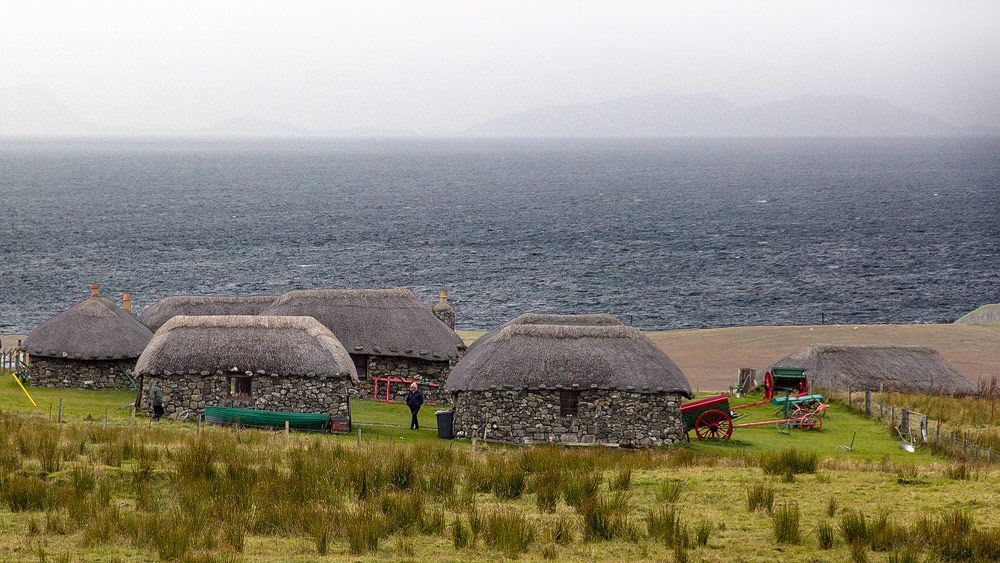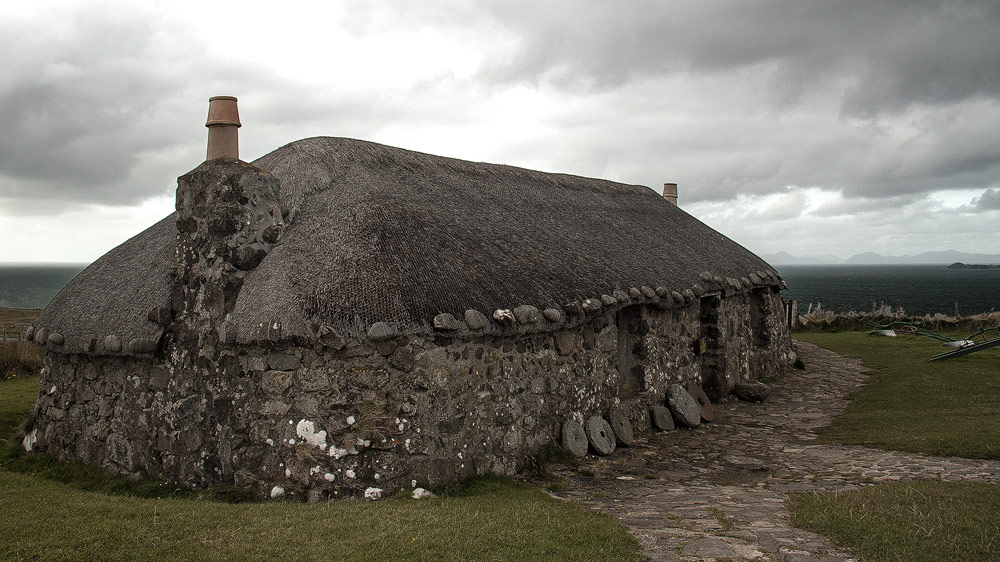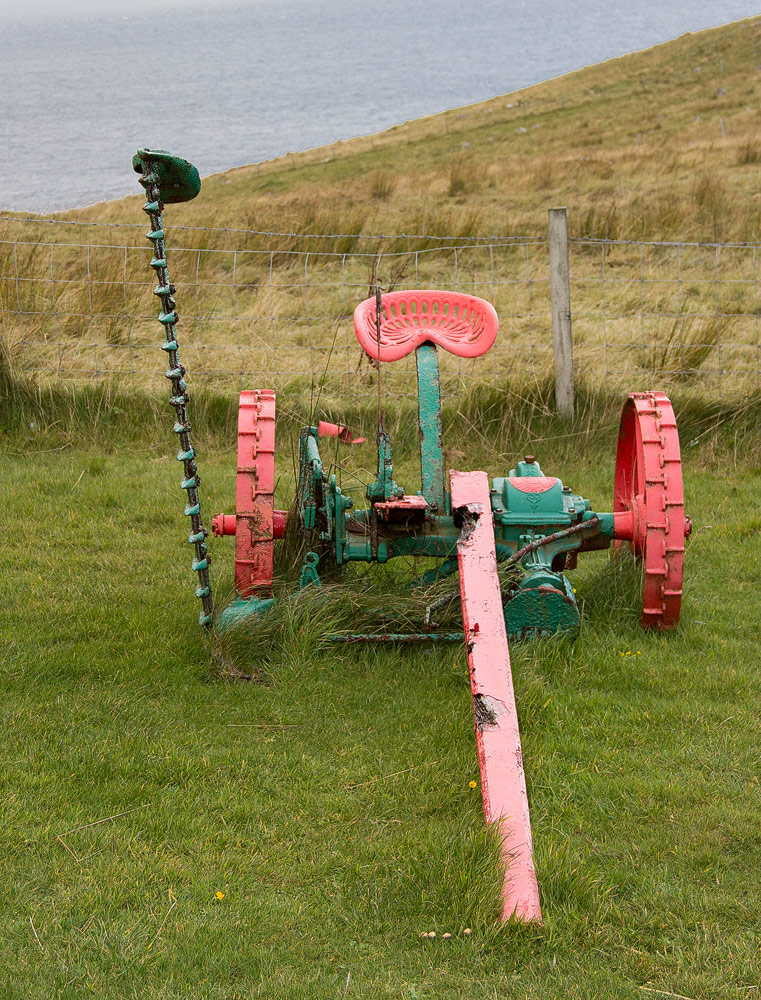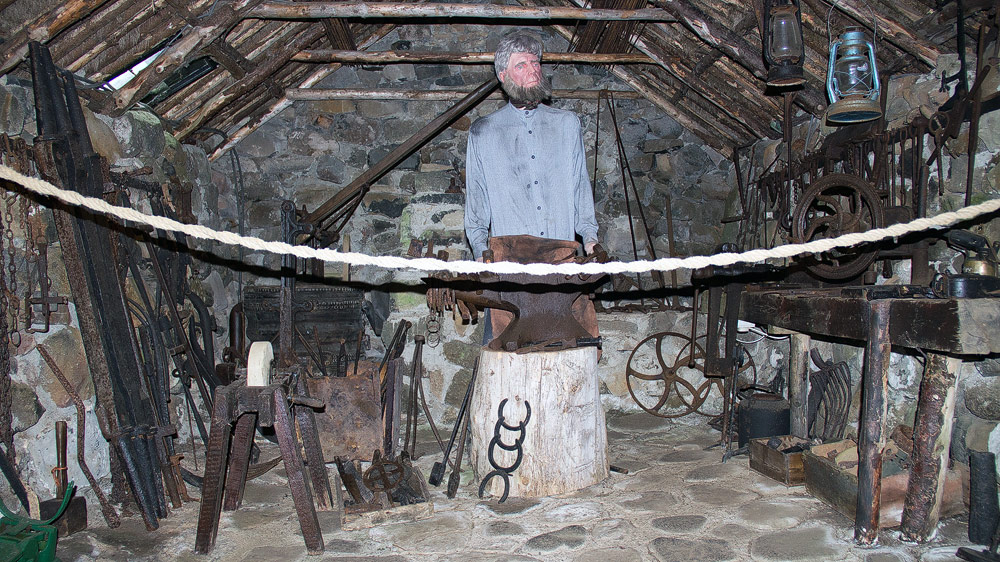Dark, thatched houses duck into the Skye landscape. Inside, it’s cramped and there’s a smell of peat fire. The Skye Museum of Island Life impressively shows its visitors what life was like here a hundred years ago.

At the Museum of Island Life, visitors can step back in time to the 18th and 19th centuries. In fact, the museum village consists of seven old blackhouses. Blackhouses are gloomy, stone-walled houses with thatched or thatched roofs. Heavy stones dangle down the sides as a means of fastening the roof.
Space inside such a house is limited, as the museum’s dwelling house vividly demonstrates: One parlor, two bedrooms – that’s it. Everything is still originally furnished. The box beds with their straw mattresses and linen blankets, the chairs in the kitchen, old iron pots, a Bible …
The houses were heated with peat fires, the smoke of which spreads a very special, strong but pleasant smell. A smell that still wafts around the nose here today.
In addition to a dwelling house, the Museum of Island Life also has a blacksmith’s shop, a weaving mill and, of course, a simple stable. Today, there are no cattle in it, but a collection of tools, some of which are two hundred years old (including a castration tool). Between the blackhouses are other old tools and vehicles for working the fields. For example, a plough in front of which a horse could be harnessed.

Still important is the Ceilidh House. “Ceilidh” (pronounced something like “Käili”) is the Gaelic word for a social gathering – usually with music. So you could say it was the community centre of the village. It now houses old documents and letters that trace a little of the life of the villagers. Next to it hang many old postcards and photographs, even showing the visit of the Duchess of York in 1933.
The Museum of Island Life builds up a unique atmosphere that makes you feel a bit like life back then.
Tip: Start at the Ceilidh House
You don’t get a real sense of the people who lived here until you see the exhibition at Ceilidh House, which is at the very back. My tip is to start the tour there. Because then the village doesn’t seem so strange anymore. You have faces and fates in front of you and carry them with you into the other houses.
By the way: If you walk the small side street from the parking lot of the museum further behind, you will reach the cemetery where Flora MacDonald is buried. It’s a must-see.
Knowledge: Blackhouses in the Highlands

Blackhouses were the traditional dwelling of farmers called crofters in the Highlands, and especially in the Hebrides. Since they did not have much money, they resorted to cheap building material: stone and straw. For the timber of the roof trusses, the builders had to come up with something – Skye was not forested at that time. So they relied on driftwood washed up on the coast.
The construction of the Blackhouses, however, is ingenious. With their straw-line shape, the poor huts bravely withstood the harshest of storms. They were the safe roof over the head of the poor population.
However, the buildings in the museum are rather modern blackhouses. In even earlier centuries, people shared rooms with cattle, and the peat fire did not burn in the chimney – there was no chimney. The smoke simply escaped through holes in the roof. More or less.
The Blackhouses were still inhabited until the 1930s. When the last inhabitants finally left, clever heads made the decision to preserve this village. The first house was opened to the public back in 1965.
Personal note: Between coziness and hopelessness

I found the atmosphere in the village to be as ambivalent as the weather that accompanied us during our visit there. Under blue skies, the houses certainly looked homely. But with grey clouds, I found them rather threatening and daunting. They expressed a hopelessness.
Directions:
From Portree take the A87 towards Uig. At Uig, however, look out for the turning for Staffin and (it says at the bottom of the sign) Kulmuir. Follow the sign, from here on this is the A855. Now continue on the road for about ten kilometres until you can turn right into the large car park of the museum.



